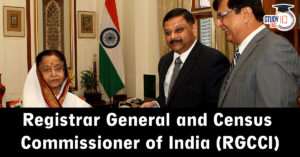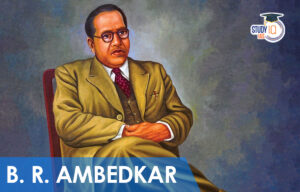Table of Contents
Persons with Disabilities
The United Nations Convention on the Rights of Persons with Disabilities (UN CRPD) defines “Persons with disabilities include those people having long term physical, mental, intellectual or sensory impairments which in interaction with various barriers may hinder their full and effective participation in society on an equal basis with others“.
Rights of Persons with Disabilities Act, 2016, further defines “Person with Benchmark Disability” as “A person with not less than 40% of a specified disability”. In this article, you will get all about the Challenges associated with Persons with Disabilities and Empowering Technology for Persons with Disabilities.
We’re now on WhatsApp. Click to Join
Empowering Persons with Disabilities
Empowering persons with disabilities involves fostering inclusive infrastructure, embracing assistive technology, and promoting equal opportunities in education and employment. By raising awareness, implementing supportive policies, and encouraging digital inclusion, society can break down barriers and ensure the full participation of individuals with disabilities. Collaboration between government, businesses, and communities is vital to create an environment where everyone can thrive, regardless of ability, contributing to a more equitable and empowered society.
Empowering Persons with Disabilities Examples
- Accessible Infrastructure: Construct ramps and tactile paths for mobility.
- Assistive Technology: Provide tools like screen readers and braille displays for accessibility.
- Inclusive Education: Implement policies for equal access and support in schools.
- Employment Opportunities: Foster diversity and provide accommodations in workplaces.
- Skill Development Programs: Tailor training for specific needs, enhancing employability.
- Awareness Campaigns: Challenge stereotypes and promote inclusive attitudes.
- Policy Advocacy: Advocate for rights, equal opportunities, and anti-discrimination policies.
- Digital Inclusion: Ensure online content is accessible to assistive technologies.
- Community Support Services: Offer counselling, healthcare, and social support at the community level.
- Collaborative Partnerships: Encourage alliances for a coordinated approach to empower persons with disabilities.
Technology for Empowering Persons with Disabilities
Technology is seen as improving the lives of persons with disabilities in the context of inclusive urban development.
- Enabling an inclusive built environment: Technology and ICT (Information and Communication Technology) are crucial in creating an enabling environment for persons with disabilities. This includes accessible infrastructure, assistive technology, and innovative solutions that allow them to participate fully in urban life.
- Empowering individuals: An accessible environment not only helps them overcome daily obstacles but also enables them to pursue their dreams.
- Rapid urbanization and increasing population: The urban population is projected to grow significantly, and a considerable number of persons with disabilities already live in cities. Technology can help address the challenges faced by this population in urban areas.
- Addressing disaster and climate risks: Technology can assist in mitigating disaster risks and support individuals with disabilities in adapting to and recovering from such situations.
- Innovative technology and ICT: Innovative technology and ICT solutions are crucial for inclusive urban transformation and improving the quality of life for all citizens.
- Global platforms and initiatives: The Government of India has initiated various platforms and initiatives to promote technological innovations and entrepreneurship, including the Start-up 20 Engagement Group and the G20 Digital Innovation Alliance. These platforms aim to showcase innovative solutions, create alliances, and discuss how technology and data can be effectively utilized for inclusive city management.
Challenges Faced by Persons with Disabilities
- Discrimination and Inequality: PwDs experience various forms of discrimination, including reluctance by employers to hire them, leading to limited employment opportunities. This discrimination hampers their social and economic integration, contributing to inequality.
- Loss of Social Status: Limited opportunities for education and employment can result in PwDs experiencing a loss of social status. The lack of financial independence and inadequate access to resources especially further exacerbate this issue.
- Inhuman Treatment: PwDs, especially those with mental illness or mental retardation, often face social exclusion and inhumane treatment. Stigma and misunderstanding contribute to their marginalization within society.
- Access to Education: PwDs encounter barriers in accessing education. Students with visual impairments may lack appropriate educational materials, while children with learning disabilities may face exclusion and rejection from schools.
- Unemployment: PwDs experience lower employment rates, primarily due to stereotypes, stigma, and a lack of inclusive hiring practices. The reluctance of the private sector to hire PwDs restricts their ability to be financially independent and self-sufficient.
Current Status of PwDs in India
- Population: According to the 2011 Census, there were approximately 26.8 million PwDs in India, which constituted about 2.21% of the country’s total population. Out of this, there were 14.9 million men (2.41% of men) and 11.9 million women (2.01% of women) with disabilities.
- Rural and Urban Distribution: Around 69% (18 million) of PwDs in India reside in rural areas, while the remaining 31% are in urban areas.
- Types of Disabilities: The distribution of disabilities among PwDs in India is: 20% have a disability in movement, 19% have a visual impairment, 19% have a hearing impairment, and 8% have multiple disabilities.
- Age Group: The age group with the highest prevalence of disabilities is 10-19 years, comprising approximately 4.62 million individuals.
- Employment: Out of the total PwDs, about 36% are employed, with a higher percentage of employed males (47%) compared to females (23%).
- The proportion of employed PwDs is highest in states like Nagaland (~52%), Sikkim (49%), and Arunachal Pradesh (~45%).
- Underreporting: Disability rights activists argue that the census figures represent only a small percentage of the actual number of PwDs in India. According to World Bank data, the total number of persons with disabilities in India could range between 40 and 80 million.
Empowering Persons With Disabilities in India
Empowering persons with disabilities in India is a multifaceted endeavour that involves addressing various aspects of societal, economic, and technological inclusion. Here are key elements in the empowerment of individuals with disabilities in the Indian context:
- Accessible Infrastructure: Enhance public spaces with ramps and tactile paths for independent mobility.
- Assistive Technology: Leverage tools like screen readers and mobility aids for effective engagement.
- Inclusive Education: Ensure equal access to education with adapted methodologies and assistive tech.
- Employment Opportunities: Promote diversity in the workforce with equal employment and accommodations.
- Skill Development: Tailor programs for IT, vocational skills, and entrepreneurship for self-reliance.
- Awareness and Sensitization: Eliminate stereotypes through societal awareness and sensitization.
- Policy Advocacy: Implement policies for equal opportunities, accessibility, and anti-discrimination.
- Digital Inclusion: Enable full digital participation with accessible websites and applications.
- Community Support: Provide holistic community-level services for counselling, healthcare, and social support.
- Partnerships: Foster collaborations for a coordinated effort to empower individuals with disabilities.
Constitutional Provisions for Disabled Persons in India
- Preamble: The Preamble seeks to secure social (as well as economic and political) justice for all citizens along with equality of status and opportunity.
- Article 14: Right to Equality for every citizen including disabled persons.
- Article 15: Prohibition of discrimination against any citizen including PwDs.
- Article 21: This article ensures the right to life & liberty that includes and applies to disabled persons.
- Article 23: Protects disabled persons against trafficking.
- Article 32: Guarantees every citizen, including persons with disabilities to move to the Supreme Court for enforcement of Fundamental Rights.
- Article 41: The state shall make effective provisions for securing the right to work, education and public assistance in cases of unemployment, old age, sickness and disablement, within the limits of its economic capacity and development.
- Article 226: Every person including disabled persons can move to the High Court for enforcement of Fundamental Rights.
- Article 243 G: Social Welfare, including disabled and mentally disabled persons.
- Seventh Schedule: The subject of “relief of the disabled and unemployed” is specified in the State List.
- The welfare of the Disabled and mentally retarded is listed as item 26 in the Eleventh Schedule and item 09 in the Twelfth Schedule.
National Legislations for Persons With Disabilities
- The Rehabilitation Council of India Act, 1992: It provided statutory status to the Rehabilitation Council of India (RCI, established in 1986). The mandate given to RCI is to regulate and monitor services given to persons with disability, to standardize syllabi and to maintain a Central Rehabilitation Register of all qualified professionals and personnel working in the field of Rehabilitation and Special Education.
- The National Trust for the Welfare of Persons with Autism, Cerebral Palsy, Mental Retardation, and Multiple Disabilities Act, 1999: The Trust strives to enable persons with disability to live independently by:
- Promoting measures for their protection in case of death of their parents;
- Evolving procedures for the appointment of their guardians and trustees;
- Facilitating equal opportunities in society.
- The Rights of Persons with Disabilities Act, 2016: It replaced the Persons with Disabilities (Equal Opportunities, Protection of Rights and Full Participation) Act, 1995. It fulfils the obligations to the United National Convention on the Rights of Persons with Disabilities (UNCRPD).
- The Act has several provisions for the benefit of persons with disabilities it has increased the magnitude of reservation for Persons with Disabilities from 3% to 4% in government jobs and from 3% to 5% in higher education institutes.
- It stresses to ensure accessibility in public buildings in a prescribed time frame.
- The Mental Healthcare Act, 2017: It is implemented by the Ministry of Health and Family Welfare. It replaced the Mental Health Act, of 1987. It has been passed to provide mental healthcare and related services for persons with mental illness and to protect, promote and fulfil their rights.
Other Initiatives for Persons With Disabilities
- Accessible India Campaign (Sugamya Bharat Abhiyan): Launched in 2015, this campaign aims to make public spaces, transportation, and information and communication technologies (ICT) accessible to PwDs.
- National Action Plan for Skill Development of Persons with Disabilities (NAP-SDP): This initiative focuses on enhancing the employability and skills of PwDs through vocational training, skill development programs, and creating inclusive employment opportunities.
- Deendayal Disabled Rehabilitation Scheme (DDRS): The scheme provides financial assistance for various rehabilitation services, including education, skill training, healthcare, and assistive devices, to economically disadvantaged PwDs.
- Scholarship Schemes: The government offers various scholarship schemes for PwDs to support their education and skill development. These include the National Scholarship Scheme for Persons with Disabilities and the Pre-Matric and Post-Matric Scholarship schemes.
- Accessible Education: The government has taken steps to promote inclusive education for PwDs, such as the Sarva Shiksha Abhiyan (SSA) and the Inclusive Education for Disabled at Secondary Stage (IEDSS) programs.
- Reservation in Government Jobs: PwDs are entitled to reservation in government jobs and public sector undertakings as per the provisions of the Rights of Persons with Disabilities Act.
Way Forward
- There is a need for behavioural changes, capacity building, investments in accessible infrastructure, and inclusive and accessible innovations to create an equitable urban future.
- These efforts will empower individuals with disabilities and benefit society as a whole by harnessing the full potential of talent.


 Mechanisms to Combat Judicial Corruption...
Mechanisms to Combat Judicial Corruption...
 Registrar General and Census Commissione...
Registrar General and Census Commissione...
 Ambedkar Jayanti 2025: Biography, Legacy...
Ambedkar Jayanti 2025: Biography, Legacy...





















